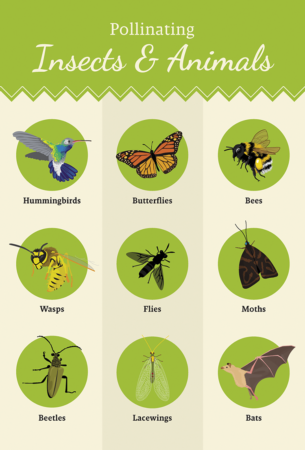Pollination, the transfer of pollen from one flower to another, results in the production of vegetables, fruits, and the seeds we need to grow more plants.
Bees, flies, butterflies, birds, and beetles are the pollinators, carrying pollen on their bodies and then distributing it as they move from one flower to the next.
We need these little helpers to grow our gardens and should be wary of using traps and chemical sprays to keep them away.
The most common pollinators you may see in your garden include wild honeybees that roam freely, managed bees that are enclosed in hives, bumblebees, butterflies, moths, and wasps.
“Many people are afraid of bees – they’ve got a scary stinger that some people are allergic to, but did you know that one out of every third bite of food you take is thanks to a pollinator?” said PA Department of Agriculture Secretary Russell Redding. “Think twice before you swat them and consider what you can do to safeguard them and help their colonies flourish. Because when pollinators flourish, so does our food supply.”
To save space in my garden for more vegetables, I opted to skip the flowers this year. Instead, I built flower boxes around the top of my garden and used those for growing my annuals. Red, yellow, and pink flowers seem to be the best colors for attracting pollinators. I also included a water fountain. If you choose to add a water feature to your garden, do not add chemicals to the water to keep it clean. You will need to manually clean the bowl weekly to keep away unwanted insects, like mosquitos.
I also recommend placing rocks around the edge where the waterfalls, giving birds and insects a place to rest.
In addition to the flower boxes, I also planted some wildflowers outside of my garden in a close patch of woods to add an additional food source.
You can also aid the pollinators by:
Downsizing your lawn – lawns don’t have much to offer pollinators so consider converting some of your grass to a garden bed full of heavy pollen and nectar producing plants.
Growing native plants in your garden – pollinators and plants need each other to survive. Planting a diverse group of native plants that flower at different times of the year can make a huge different to pollinator populations.
Avoiding or limiting the use of pesticides, fungicides, and herbicides in your home garden. They can kill pollinators and poison hives. If you do use them, follow the label directions carefully. Apply to plants when they are not flowering, at dusk and when the air is calm, to limit exposure to pollinators.
Pollination is critical and affects 35% of the world’s crop production. If you want to read more about pollination or get involved, please visit the Pennsylvania Department of Agriculture’s website. You can find more information by searching “pollinators.”





Leave a Comment
Your email address will not be published. Required fields are marked with *